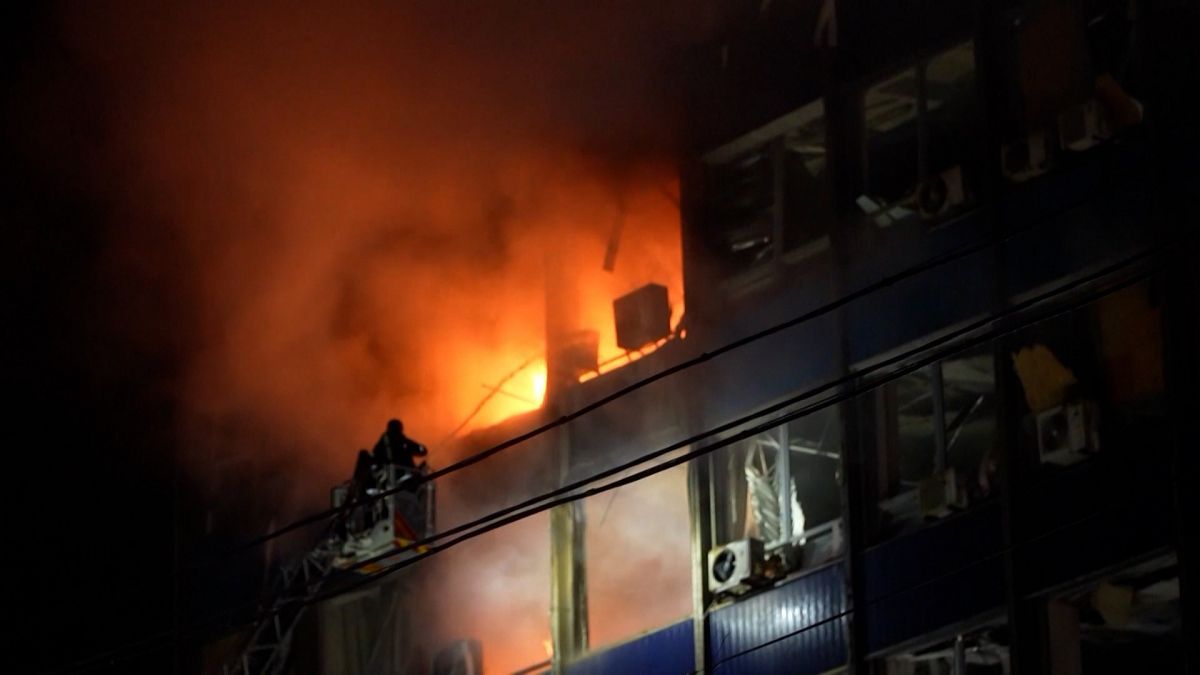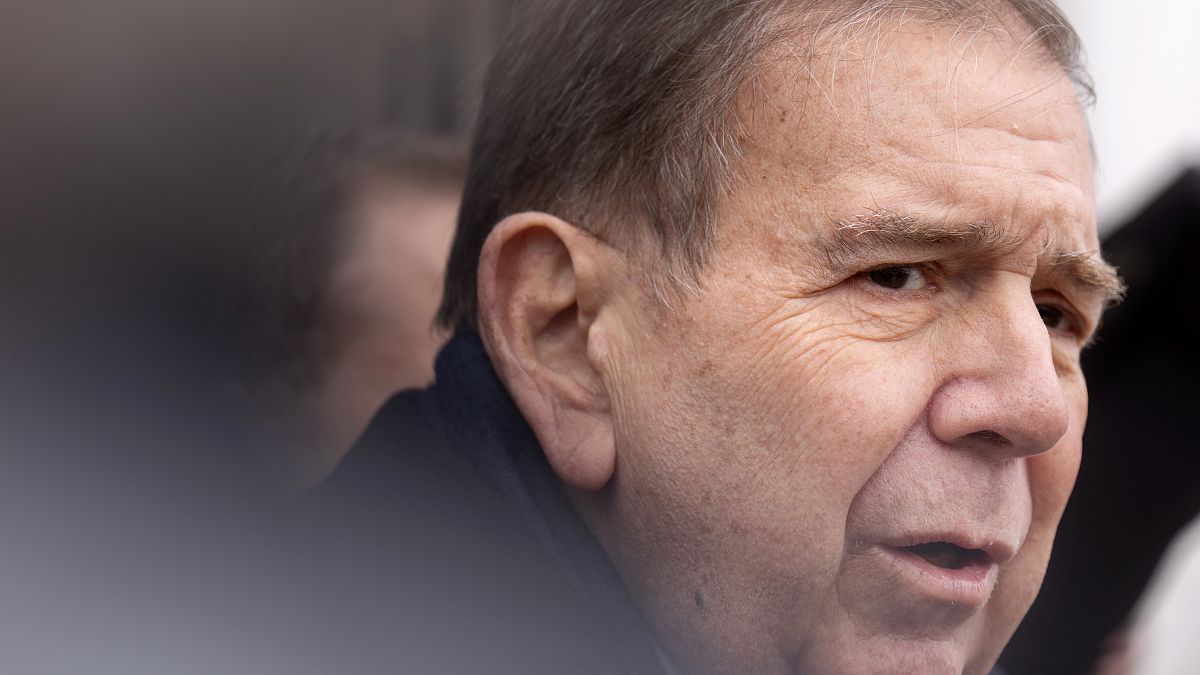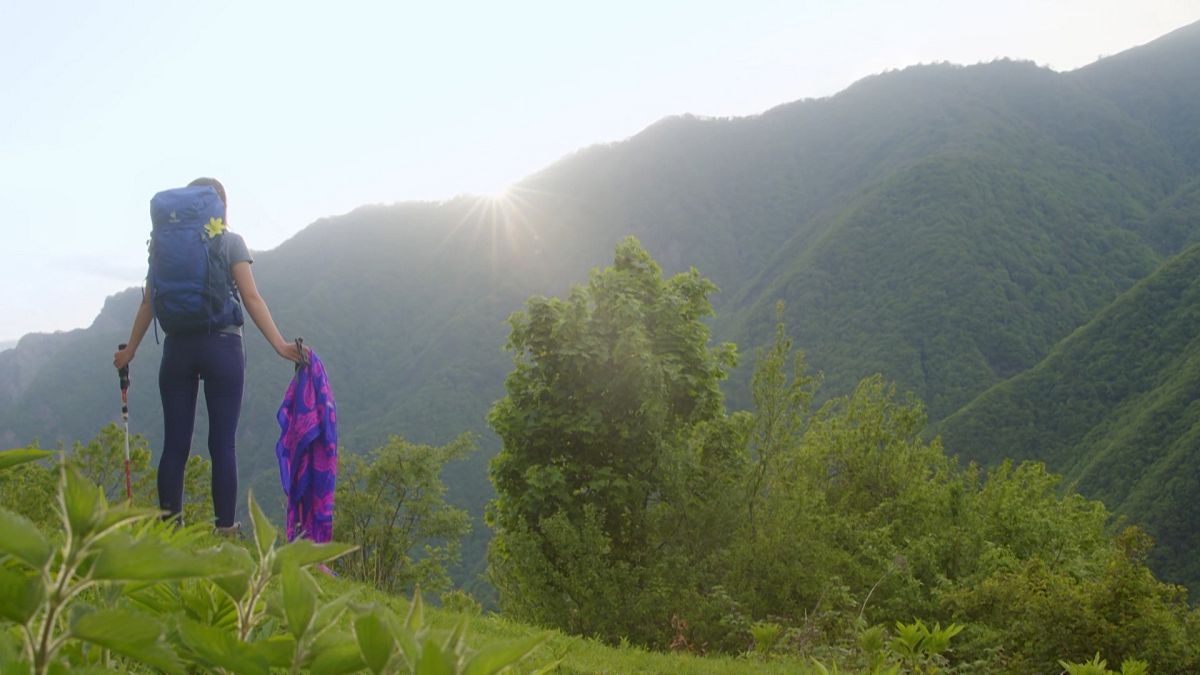Euronews spoke to Janusz Bugajski, Senior Fellow at the Jamestown Foundation, to understand the situation and prospects for the region in the context of Russia's war against Ukraine, China's influence and ahead of the US presidency of Donald Trump.
Central Asia, a region rich in oil, gas and strategic minerals, has long been a focal point of geopolitical interest for global powers like Russia, China, and the West.
Situated at the crossroads of Eurasia, this area's strategic importance has been on the rise ever since Russia's full-scale invasion of Ukraine in early 2022.
Euronews spoke to Janusz Bugajski, a Senior Fellow at the Washington-based Jamestown Foundation, on how the result of this month's US elections could influence Washington's role in Central Asia, the evolving relationship between Russia and the Central Asian states since the Soviet Union's dissolution, and the potential for these countries to navigate the complex geopolitical landscape.
Bugajski further shone a light on the main strategies these nations might employ to maintain their independence and foster regional integration amidst the shifting global power dynamics.
Euronews: Central Asia, rich in oil, gas, strategic minerals, and the crossroads of Eurasia, is an area of geopolitical interest for Russia, China, and the West. How can the elections in the USA change or improve the US’ influence over the region?
Janusz Bugajski: First, American and Western diplomatic vocabulary does not recognise the term “area of geopolitical interests,” or at least is uncomfortable with it. Then-Russian President Dmitry Medvedev talked about Russia’s area of state interests after the Russo-Georgian War of 2008.
Under the Biden Administration, the amount of American aid to Central Asia significantly dropped as the U.S. pulled out of Afghanistan, and aid was redirected towards Ukraine. President-elect Donald Trump recognises the importance of natural resources from the region and is interested in keeping China and possibly Russia in check.
It is in the US and EU's strategic interests to develop deeper ties with the region, including investment, trade, and transportation ties and security cooperation.
Euronews: What have the core dynamics between Russia and Central Asia been since 1991? Were relations always contentious or cooperative, and what defined this relationship?
Bugajski: Relations between the former Soviet republics in the initial years of (Russian President Boris) Yeltsin's presidency were relatively cordial. However, Russia was fixated on its internal problems.
The Central Asian countries seized the opportunity to consolidate their independence. Kazakhstan’s first president, Nursultan Nazarbayev, was a key figure in this state-building process as leader of the largest state in the region by territory and GDP with the longest border with Russia.
Unlike the three Baltic states, the Central Asian countries did not have recent periods of statehood. They needed to conduct three simultaneous transformations – political, economic, and international.
This involved establishing independent political institutions free of centralised control from Moscow, conducting economic reforms to build a market economy and dismantle the failed communist model of central planning, and engaging in international relations as independent states no longer dependent on Kremlin decisions. Kazakhstan was a leader in all three processes.
Euronews: What legal and diplomatic mechanisms tie Russia to Central Asia? Is it only a matter of a post-Soviet colonial and cultural legacy, or is it something else?
Bugajski: After centuries of expansion, the Czarist Empire conquered all of Central Asia by the late 19th century. The legacy of these repressive colonial policies persists to this day, as a new generation of Kazakhs, Uzbeks, and others are rediscovering their distinct national identities and histories.
The role of national leaders such as Nazarbayev and Karimov in such national revivals is still insufficiently recognised. Contrary to Moscow’s expectations, no Central Asian state has openly supported Russia’s invasion of Ukraine, and the war itself has deepened Kazakhstan’s re-evaluation of the Soviet era as one of imperial oppression.
At the same time, Central Asian leaders are well aware that Russia remains one of the dominant powers in Eurasia and is supported by China, the other great power. Much of their trade continues to be conducted with Moscow.
They cannot alienate Russia through any hostile actions. Instead, they must pursue a balanced policy between Russia, China, and the West to maintain their freedom of manoeuvre. Kazakhstan has been at the vanguard of this movement for decades to protect the young state and ensure economic development.
Euronews: Now the balance is no longer there because of Russia's war against Ukraine. But how does Russia try to keep its influence over Central Asian states?
Bugajski: The war against Ukraine has significantly weakened Russia in terms of its military potential and financial resources. However, Moscow could instead employ political, informational, and financial tools to try and replace Central Asian governments that are viewed as too independent or pro-Western, similar to Georgia or Moldova.
The most effective way for Central Asian states to protect themselves from such a scenario is threefold. First, a multi-vector foreign policy such as Nazarbayev spearheaded since Kazakhstan’s independence provides greater international leverage. Second, intensified regional integration will reduce economic dependence on Russia or China.
Thirdly, closer economic and trade ties with Europe and the United States will give the trans-Atlantic community a bigger stake in Central Asian security and independence. Ties with the Pacific Rim, including Japan and Korea, are also important.
Central Asian countries do not have the luxury of a NATO nuclear umbrella to defend their security. Instead, they can better protect their national interests through a multi-vector policy.
This entails not aligning too closely with any single state and engaging with numerous international organisations, including the Shanghai Cooperation Organization (SCO), the OSCE, the Organization of Turkic States (OTS), and the Conference on Interaction and Confidence Building Measures in Asia (CICA).
It is noteworthy that Kazakhstan just announced that it refuses to join BRICS. In such formats, constructive initiatives can be pursued to strengthen Central Asia by settling any border issues and building a common front to combat terrorism, promoting cultural cooperation, and pursuing environmental protection. Kazakhstan has also invested in the “Nurly Zhol” infrastructure development program.
Euronews: Kazakhstan has, in particular, tried to portray itself as a new diplomatic hub, a “Steppe Switzerland,” with its attempts to mediate the war in Syria especially noteworthy. Is there a role Central Asia could play in ending the war in Ukraine? Could it do so in a way that advantages themselves? Is there a role for China in this?
Bugajski: Just as Austria, Finland, and Switzerland played a role in reducing tensions during the Cold War, today’s global antagonists could meet on neutral grounds in Kazakhstan, as they used to do in Vienna, Helsinki, Geneva, and Lausanne in the last century.
Although Central Asian states will not be in a position to negotiate an end to the war in Ukraine, they could provide a neutral venue for discussing and resolving war-related questions, such as prisoner exchanges, protection of civilian infrastructure, or ensuring grain export through the Black Sea.
Coordination on nuclear security and the environment in various parts of the world is also valuable, and Kazakhstan, in particular, is eager to provide a venue for international cooperation.
Euronews: What would you recommend Central Asian states do to avoid becoming Russia’s next victims? Is there a role for China in this?
Bugajski: The key to consolidating independence and avoiding being drawn into competing blocks in a polarised world is for the Central Asian states to simultaneously pursue greater regional integration and global outreach. This will enhance their economic strength, investment potential, security posture, and international standing. A more consolidated and unified region can better protect itself against negative foreign influences.
Regional integration initiatives were attempted following the Soviet collapse but with limited impact. In 1994, President Nazarbayev initiated an agreement to create a Central Asian Union with Uzbekistan, Kyrgyzstan, and Tajikistan, initially focusing on economic cooperation. The plan was dropped due to persistent rivalries between some states, disputes over scarce water resources, competition for external investments, and increasing attempts by Beijing and Moscow to dominate the region through a ”divide and rule” strategy.
Russia’s Eurasian Economic Union and China’s Silk Road Economic Belt agendas were both launched to undercut Central Asia’s distinct and independent regional initiatives. In 2007, Nazarbayev tabled the idea of a Central Asian Economic Union involving the free movement of goods, services, capital, and people.
The Union’s mission would be to increase regional security, economic growth, and political stability. Despite the obstacles, the integration project has been revived in recent years, particularly as relations between Kazakhstan and Uzbekistan, the two largest states, have markedly improved.
In addition to intensifying economic ties, both governments seek to tackle pressing regional challenges, ranging from environmental problems and mass migration to cross-border drug trafficking and threats from Afghanistan and ISIS. Integration has also been boosted by the US-led B5+1 initiative.
Euronews: If we speak about the past and present, prominent figures such as Karimov or Nazarbayev have become a symbol of regional post-Soviet stability. Some new political figures are more reform-oriented. What is their strategy?
Bugajski: Nazarbayev had to pursue three transformations simultaneously: transitioning from a Soviet-planned economy to a market economy, engaging in nation-building, and developing ties with international partners.
Today, Uzbekistan, under President Shavkat Mirziyoyev, for example, is also reforming its economy and building diversified economic and diplomatic ties. Thus, the Nazarbayev model is adopted by other countries because it works.
Regional integration needs to be developed to make the whole bigger than the component parts, and to a great degree, it is already happening. It is in the interest of the EU countries to have a common market of 82 million consumers in Central Asia.
This would strengthen each state’s sovereignty and increase intra-regional trade and investment, giving the region a more distinct identity on the global stage.
When the war in Ukraine reaches a climax, the Central Asian states will face a profound challenge: either intensify regional integration together with global political and economic engagement or become peripheral players increasingly woven into a spreading Russian or Chinese imperial tapestry.

 1 month ago
26
1 month ago
26






 We deliver critical software at unparalleled value and speed to help your business thrive
We deliver critical software at unparalleled value and speed to help your business thrive






 English (US) ·
English (US) ·